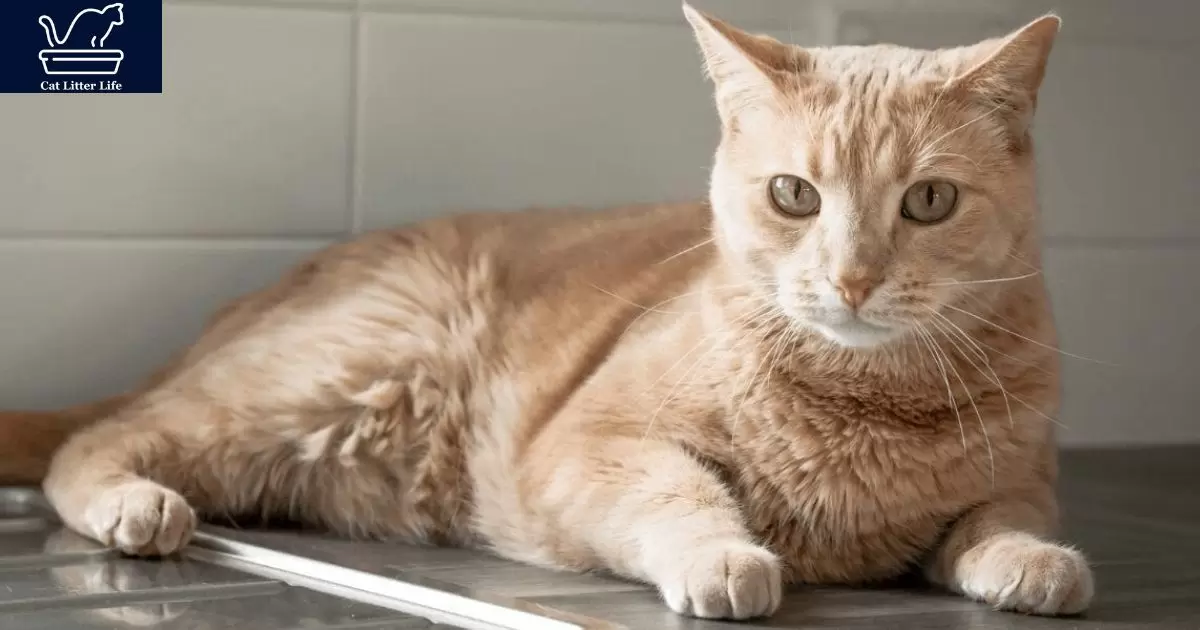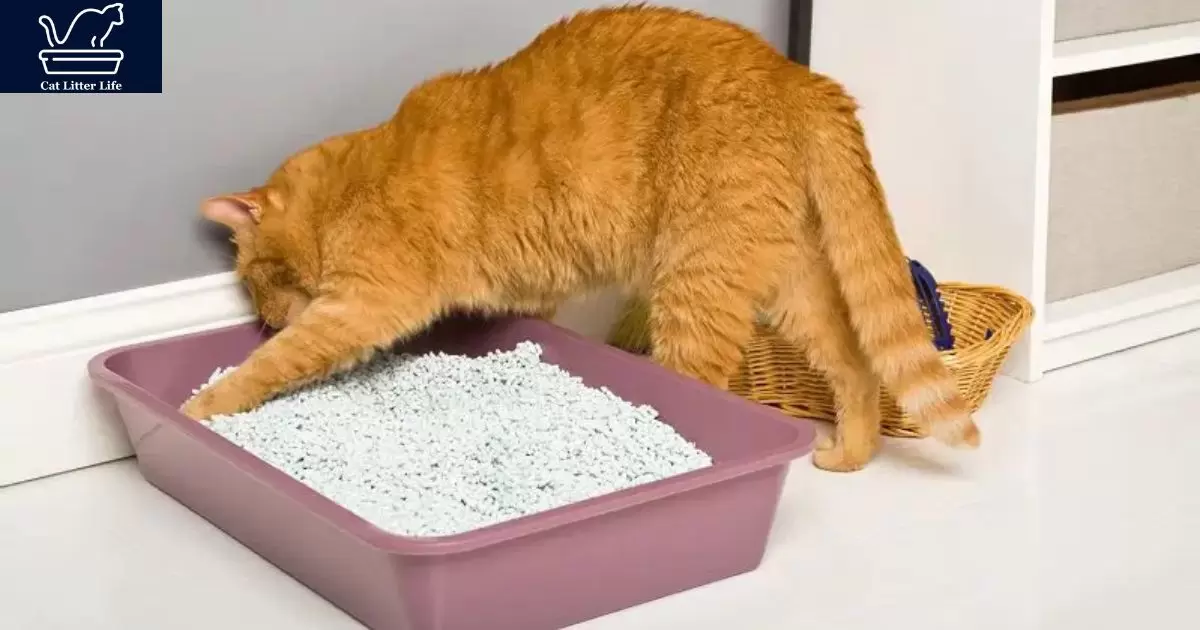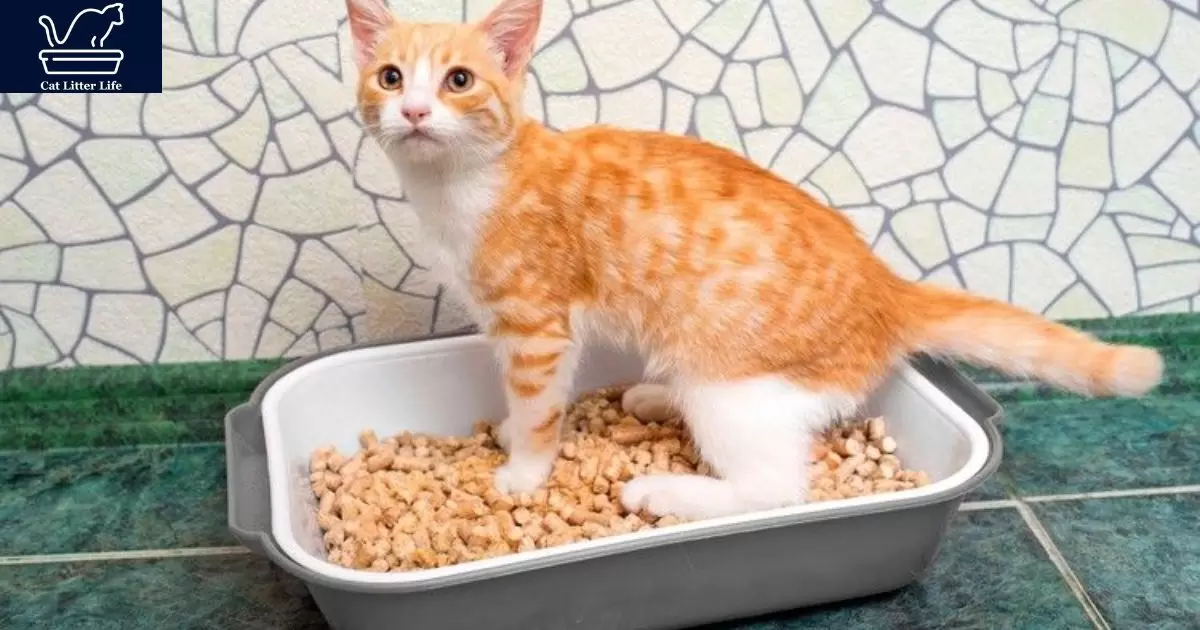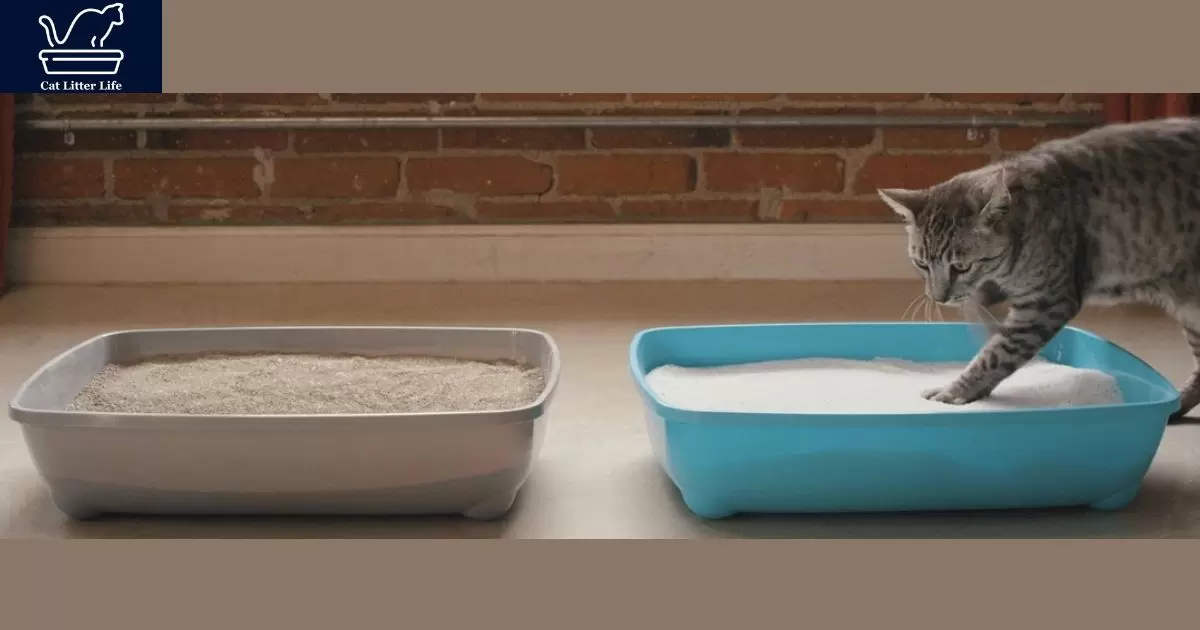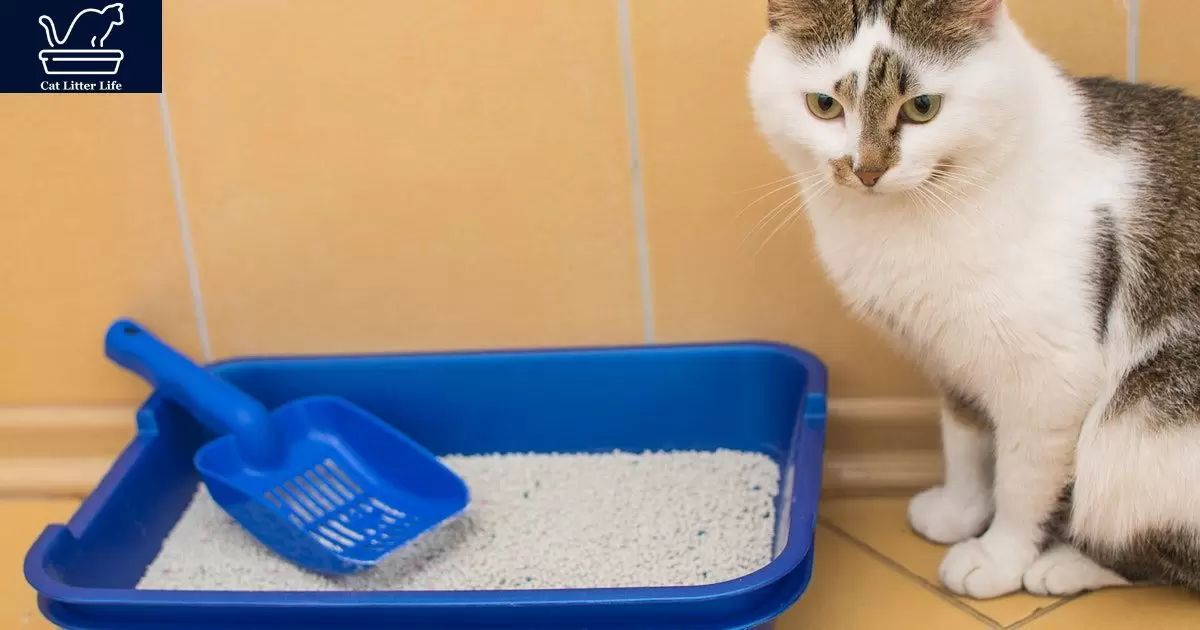A cat’s litter can broaden a foul odor after repeated use. The waste from urine and feces accumulates. Bacteria thrive at the waste, liberating pungent gases as they metabolize it. Ammonia additionally off-gasses from the cat urine. The odors quickly build up and make the litter stink.
Why does my cat’s litter smell so bad? This is a commonplace complaint of cat proprietors. Cats bury their waste in muddles. But the smells from urine and feces accumulate. Bacteria grow in the waste, producing stinky odors and gases. The ammonia from cat pee also evaporates into the clutter.
A smelly litter box is ugly for cats and owners. The waste from urine and feces adds scent. Bacteria metabolize the waste, giving off nasty gases. The ammonia in cat urine also evaporates. Clumping litter absorbs liquids and odor. Daily scooping and regular litter changes are key.
Common Causes: Why Does My Cat’s Litter Smell So Bad?
An easy muddle field, ideally filled with pine shavings for cat litter, shouldn’t emit plenty of an odor. But whilst the smell gets out of control, there are a few standard suspects to blame.
Buildup of Waste
One of the maximum obvious reasons cat litter can smell is while waste has built up in the container. Cat urine has a robust, ammonia-like odor that becomes greater suggested the longer it sits. Feces also supply an unsightly odor as they start to decompose.
To prevent waste buildup:
- Scoop the litter box at least once a day. Twice is even better for very smelly litter.
- Dump everything, wash with mild soap and water, and add fresh litter every 1-2 weeks.
- Use clumping litter and scoop out just the clumps in between full litter changes. The rest of the clean litter can stay.
Bacteria Growth
Even if you’re diligent about scooping, bacteria can grow inside the muddle box and make it stink. My cat’s litter smells so bad. Each time your cat is going, more microorganisms from the digestive tract get deposited into the litter.
As these bacteria feed off the organic matter in urine and feces, they multiply quickly and produce foul-smelling byproducts. My cat’s litter smells so bad. Damp, dirty litter is an ideal breeding ground.
To inhibit bacteria growth:
- Remove clumps and soiled litter promptly before bacteria proliferate.
- Wash the litter box weekly with soap and water to remove any invisible bacterial film.
- Allow the box to dry fully before refilling, as bacteria thrive in moisture.
Location of Litter Box
Where you place the litter box can determine how much of an odor you smell. A litter box tucked away in a closed room or closet means odors can intensify without circulation. Litter box smells may be less noticeable if the box is in a more open area. Consider moving the litter box to a spot that gets more fresh air and ventilation, if possible. Avoid small enclosed spaces or places without windows.
Scented Litter Issues
Scented or deodorizing cat litters seem like an easy solution for smell. But they can sometimes make odors worse when the fragrances start to break down. The microorganism digesting the clutter can react with scented oils and chemicals, developing even more ugly smells.
Masking sellers may cause respiration irritation in some cats and people. My cat’s litter smells so bad, that you may find unscented litter less stinky in the long run. Or try a litter with activated charcoal or baking soda instead of artificial scents.
Litter Box Design
Some litter box styles and designs are better at containing odors than others. Covered boxes with a top can trap smells inside rather than letting them circulate freely. Litter robots and self-cleaning boxes can leave behind urine or feces that start to stink.
An open-top litter box is best for airflow and limiting odor. If you find that, my cat’s litter smells so bad, consider trying different boxes to see if a non-hooded design helps, just keep privacy in mind for shy cats.
Medical Conditions
In some cases, a cat with a medical issue can make the litter smelly. Feline lower urinary tract disease (FLUTD) can make urine stronger smelling. Diabetes, kidney sickness, and digestive troubles might also trade clutter box aroma.
See your veterinarian if the smell seems bizarre or if your cat is straining, crying, or displaying signs and symptoms of pain at the same time as using the litter container. Treating the underlying condition should help improve odor.
Tips to Reduce Litter Box Odors
Cat owners know the conflict all too nicely. No matter how frequently you ease the muddle field, that unsightly ammonia odor simply may not go away. A pungent clutter box can make your complete domestic scent unsightly.
While a few scent is predicted, there are ways to reduce clutter container stench and improve air great. Implementing a few simple tips can significantly cut down on smells and keep your home fresh. Here are some top tips for adding scent control to the litter box:
Use an Air Purifier
One easy restoration for lingering muddle box scent is to apply an air cleanser. Air purifiers paintings by way of filtering out airborne debris. Models with activated carbon filters are satisfactory for trapping smells. Place the purifier near your cat’s litter box location to optimize odor removal. The activated carbon adsorbs odor molecules rather than just masking scents.
Run it consistently to prevent smells from spreading. An air cleaner eliminates muddle field odors from the air before they are a threat to permeate your private home. It also promotes better standard air pleasant for each of you and your pussycat buddy.
Improve Air Circulation
Proper airflow is key to preventing odors from accumulating in enclosed litter box areas. Improve circulation by opening windows, running fans, and avoiding small closed-off spaces. If possible, move the litter box to a more open, well-ventilated area. Stagnant air traps smell.
Getting fresh air circulating means odors have an exit route rather than sticking around. Strategically place fans or install overhead vents to keep air moving gently around the litter box vicinity. Open windows regularly too for fresh outdoor air.
Add Baking Soda
Baking soda is a simple but effective way to assist in neutralizing urine odors within the clutter box. The sodium bicarbonate reacts with acidic urine to lessen ammonia smells. Sprinkle a skinny layer of baking soda inside the bottom of the litter field earlier than adding your regular litter.
Arm & Hammer makes a cat litter deodorizer containing baking soda just for this purpose. You can also put baking soda in a small open container near the litter box to help absorb ambient odors. Just replace the baking soda every week or so to keep it fresh.
Use Odor-Sealing Litters
Switching to an odor-sealing formula may make a difference, especially if you’re dealing with strong odors like, my cat’s litter smells so bad. Litters made with activated charcoal, citrus extracts, or antimicrobial substances help lock in odors and bacteria instead of releasing them into the air.
Clean the Box Between Changes
Frequently scooping clumps is important, but extra litter box cleanings in between complete changes help too. Quick cleanups prevent odor buildup. Use gentle soap and water or diluted vinegar to wipe out any visible debris and stains without dumping all the litter.
Follow up with an enzyme cleaner on problem spots. Doing a simple cleaning like this once or twice a week removes the source of smells before they get out of hand. It also means you can go longer between deep cleanings.
Use Litter Box Liners
Litter field liners provide a smell-blocking barrier between the muddle and the bottom of the field. This prevents urine and waste from soaking into plastic and causing lingering odors. Liners designed specifically for litter boxes work best.
But you can also use inexpensive plastic shopping bags. Just replace soiled liners whenever you notice smells. The liners prevent stains and odors from setting in, making cleanup easier. And since smells can’t seep into the plastic, your litter box stays fresher longer.
Feed a Digestive Health Diet
Some cats have stinkier waste due to digestive issues like inflammatory bowel disease. Feeding your cat a diet geared for digestive health can help optimize stool quality. Look for cat foods containing prebiotics, probiotics, and fiber that support healthy digestion and natural stool odor control.
This promotes overall wellness and reduces litter box odor. Talk to your vet about switching your cat to a gastrointestinal diet if they frequently have loose, smelly stools that make the litter stinky. Treating the root cause improves odor.
Replace the Litter Box Regularly
Over time, stains and odors can build up in plastic litter boxes even after frequent scooping and cleaning. About every month or two, toss the old box. Replacing worn-out litter boxes gives you a fresh start without any lingering odors that routine cleanings don’t tackle.
Cracked, warped boxes also harbor more smells. If you find that, my cat’s litter smells so bad, you should also swap out boxes as soon as you notice odors or stains you can’t eliminate. Starting over with a new litter box leaves you with that “just opened” scent.
Clean With Enzyme Spray
Enzyme cleaners break down the compounds in urine that cause ammonia odors, like urea. They help remove the source of the smell rather than just masking it. Look for a pet enzyme cleaner and spray problem areas of the litter box daily.
Nature’s Miracle and Simple Solution make popular enzyme spray products. This frequent enzyme cleaning limits the odor right at the source. The enzymes “eat away” at the particles that otherwise get released into the air as smells.
| Tip | Notes |
| Use an air purifier | Removes odors and improves air quality |
| Improve circulation | Ventilation prevents odor buildup |
| Add baking soda | Helps neutralize urine smells |
| Quick cleanings | Reduce odors between full litter changes |
| Use litter liners | Creates odor barrier to keep box fresh |
| Digestive health diet | Optimizes stool quality and odor |
| Replace litter boxes | Gets rid of permanent odors and stains |
| Enzyme cleaner | Breaks down odor compounds at the source |
With some consistent work, you can successfully tackle litter box smells and maintain a pleasant home. Don’t let that stinky litter get you and your cat down. A little extra effort goes a long way for odor control and feline happiness.
Use Odor Removing Charcoal Bags
Charcoal is very porous and effective at trapping odors. Placing charcoal bags or filters under and around the litter box can help absorb smells. Just replace them monthly.
| Tip | Notes |
| Use an air purifier | Place near litter box to absorb odors |
| Improve air circulation | Helps prevent odor buildup |
| Add baking soda | Neutralizes urine smells |
| Use odor-sealing litters | Lock in odors instead of releasing them |
| Clean between litter changes | Quick cleanups help control smell |
| Use litter box liners | Contains smells and allows easy cleanup |
| Feed a digestive health diet | Promotes optimal stool quality |
| Replace litter boxes | Get rid of buildup for a clean start |
| Clean with an enzyme spray | Breaks down odor compounds |
| Use charcoal bags | Charcoal absorbs and traps smell |
When to See the Vet About Smelly Litter
In maximum instances, you can address a smelly clutter container yourself with a few easy fixes. But if the smell appears abnormal or extremely strong, do not hesitate to consult your veterinarian. Foul-smelling urine or feces can indicate an underlying medical trouble in cats.
FLUTD, kidney sickness, parasites, infections, and other troubles can exchange litter box scent and warrant a vet go-to. See the vet directly in case your cat is straining, crying, or displaying symptoms of pain or discomfort while seeking to use the clutter box. Any changes in urination patterns combined with a strong ammonia smell also deserve attention.
With the right troubleshooting, you can successfully manage a stinky litter box and keep your home fresh. Avoiding odor buildup comes down to staying on top of scooping and cleaning. But when in doubt, let your vet investigate any intense or strange smells from the litter.
FAQ’s
How can I do away with the ammonia smell in my cat’s litter box?
Use an enzyme cleaner each day to interrupt down smell compounds at the supply, specifically if, my cat’s litter smells so bad.
What can I place in the muddle field to help absorb unsightly odors?
Sprinkle baking soda inside the bottom of the box to help neutralize odors.
Why does my cat’s urine make the litter field odor so strongly?
Urine carries ammonia that gives off a robust odor, especially because it decomposes.
How often have you cleaned the muddle box to prevent smells?
Scoop every day, alternate muddle weekly, and smooth the field very well each 1-2 months.
What ought to motivate my cat’s stool to make the clutter pungent?
Issues like inflammatory bowel ailments can lead to excessively pungent stool and muddles.
Conclusion
Dealing with a smelly muddle container can be irritating, however there are answers. The ammonia odor coming from your cat’s clutter is probably due to urine buildup, bacterial boom, or other unusual causes. Simple strategies like scooping daily, adding baking soda, using litter deodorizers, enhancing ventilation, and changing worn-out muddle bins can help manipulate odors.
If the odor seems peculiar, have your vet observe your cat for capability scientific issues. With some consistent paintings, you can address a stinky litter container and make certain your home would not tackle an unsightly odor simply because your furry pal uses a clutter tray. Addressing the foundation causes, including health and welfare issues associated, is key to reducing muddle container smells and keeping your property fresh.
